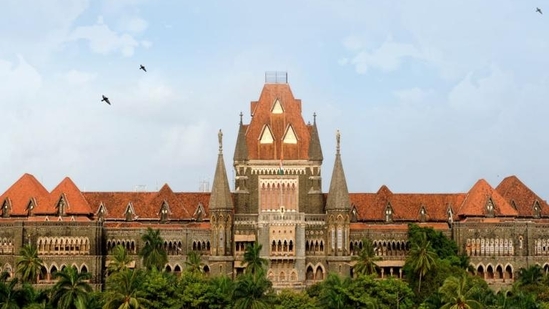- Courses
- GS Full Course 1 Year
- GS Full Course 2 Year
- GS Full Course 3 Year
- GS Full Course Till Selection
- Answer Alpha: Mains 2025 Mentorship
- MEP (Mains Enrichment Programme) Data, Facts
- Essay Target – 150+ Marks
- Online Program
- GS Recorded Course
- Polity
- Geography
- Economy
- Ancient, Medieval and Art & Culture AMAC
- Modern India, Post Independence & World History
- Environment
- Governance
- Science & Technology
- International Relations and Internal Security
- Disaster Management
- Ethics
- NCERT Current Affairs
- Indian Society and Social Issue
- NCERT- Science and Technology
- NCERT - Geography
- NCERT - Ancient History
- NCERT- World History
- NCERT Modern History
- CSAT
- 5 LAYERED ARJUNA Mentorship
- Public Administration Optional
- ABOUT US
- OUR TOPPERS
- TEST SERIES
- FREE STUDY MATERIAL
- VIDEOS
- CONTACT US
Maratha Reservation Case – Bombay HC Bench Reconstituted
Maratha Reservation Case – Bombay HC Bench Reconstituted
23-05-2025

- On May 15, 2025, the Bombay High Court formed a new Full Bench to hear petitions challenging the Maharashtra State Reservation for Socially and Educationally Backward Classes (SEBC) Act, 2024.
What Happened to the Previous Bench?
- Earlier, There was a Full Bench as well consisting of Chief Justice Devendra Kumar Upadhyaya along with 2 more judges.
- Timeline:
- Case hearings began in April 2024.
- Petitioners finished arguments by October 14, 2024.
- State government began arguments in November 2024.
- But, Hearings paused after CJ Upadhyaya’s transfer in January 2025 to Delhi High Court.
- So, No final decision had been taken till then.
Supreme Court’s Intervention (May 14, 2025):
- The Supreme Court intervened after petitions were filed by NEET 2025 aspirants who were concerned that the additional 10% Maratha reservation would reduce their chances of fair admission to medical colleges.
- The Court directed the Chief Justice of the Bombay High Court to form a new bench to consider the academic urgency and provide interim relief for students affected by the new reservation.
- The decision was based on the upcoming NEET 2025 admissions process, which could be impacted by the new quota.
- It was Mandated to hear all PILs and Civil Writ Petitions challenging the SEBC Act, 2024.
Background : What is the Maratha Reservation Case ?
- The Maharashtra State Reservation for Socially and Educationally Backward Classes (SEBC) Act was passed in 2024.
- It sets aside 10% reservation for the Maratha community in both jobs and educational admissions under the category of socially and educationally backward classes.
- With the addition of 10% reservation for the Marathas, the total reservation in the state now reached 72%.
- Maharashtra previously had a reservation of 62%, including various categories such as SC, ST, OBC, Vimukt Jati, Nomadic Tribes, EWS and others.
- This Bill was drafted based on the findings of the Maharashtra State Backward Class Shukre Commission, which highlighted the need for reservations for Marathas.
Key Legal Articles Supporting SEBC Act:
- Article 342A(3): States can create their own list of socially and educationally backward classes (SEBCs). These lists can be different from the Central List.
- Article 15(4): Allows the state to make special provisions for the advancement of backward classes, including reservations in educational institutions.
- Article 15(5): Enables the state to make provisions for reservations in educational institutions for backward classes, except for minority institutions.
- Article 16(4): Grants the state the authority to reserve appointments or posts in government services for backward classes underrepresented in the services.
- Creamy Layer Concept:
- The SEBC Act also ensures the creamy layer concept, meaning that only Marathas who are economically backward (excluding those in the higher income brackets) will be eligible for the reservation benefits.
- This ensures that the more privileged Marathas are excluded from the benefits of this reservation.
Background Data on Maratha Community’s Socio-Economic Condition:
The Maharashtra State Backward Class Commission, under the leadership of Justice (retd) Sunil B. Shukre, investigated the socio-economic status of the Maratha community. Key findings from the report include:
- The Maratha community makes up approximately 28% of Maharashtra’s population.
- Out of the total Maratha population, 84% are identified as socially and educationally backward.
- This reflects a large portion of the Maratha community living in conditions of poverty and lack of access to development.
- Many Marathas are facing extreme poverty, exacerbated by the decline in agricultural income, declining land holdings (due to family divisions), and general stagnation in rural areas.
- In addition, 94% of farmer suicides in Maharashtra involve Maratha families, indicating a high level of distress among agricultural families in this community.
- The commission also reported a significant rise in child marriages among Marathas.
- For example, the percentage of child marriages rose from 0.32% to 13.7% in a span of six years (2018 to 2024), indicating social instability and distress in rural areas.
- Moreover, Marathas have faced inadequate representation in government jobs.
- This is cited as one of the reasons why there is a push for specific reservations for the Maratha community in public services.
Legal Background – Previous Efforts and Data on Past Quotas:
- Narayan Rane Committee (2014):
- A committee led by Narayan Rane recommended a 16% reservation for the Marathas.
- However, this was challenged in court, and the Bombay High Court eventually stayed the reservation.
- Gaikwad Commission (2018):
- The Maharashtra government passed the SEBC Act based on this commission’s findings, granting 16% reservation.
- However, the Bombay High Court reduced this quota to 12% in education and 13% in jobs.
- Later, the Supreme Court struck down the quota in May 2021, arguing that the state failed to provide sufficient empirical data to justify exceeding the 50% cap on total reservations, as mandated by the Indira Sawhney case (1992).
Empirical Data from the Shukre Commission (2023):
The Shukre Commission, formed in December 2023, gathered extensive data through surveys to assess the condition of the Maratha community.
- The commission conducted a survey covering 1.58 crore families across Maharashtra, which is far larger than the Gaikwad Commission’s survey that only included about 43,000 families.
- This wider survey provided a more comprehensive understanding of the Marathas' socio-economic situation.
- Extraordinary Circumstances: Based on the survey findings, the Shukre Commission argued that there were "exceptional circumstances" justifying a breach of the 50% reservation cap.
- The commission pointed out that the Maratha community faced multiple social and economic issues, which warranted additional support through reservations.
Legal Challenges and Petitioners’ Arguments:
- The Maratha Reservation Bill has faced significant legal challenges, particularly in terms of violating the 50% reservation cap set by the Indira Sawhney judgment (1992).
- Petitioners have raised several points:
- The introduction of 10% additional reservation for Marathas would increase the total reservation in Maharashtra from 62% (currently covering SC, ST, OBC, and other categories) to 72%.
- This would breach the Supreme Court’s 50% cap on total reservations.
- Petitioners argue that the Marathas do not qualify as a “backward class” in the constitutional sense, especially since the 1992 Indira Sawhney case ruled that a state must provide solid socio-economic data to justify reservations for a group.
- The Supreme Court struck down the 2018 SEBC Act in 2021 because the state failed to provide quantifiable data proving that the Maratha community was backward enough to justify a quota exceeding the 50% limit.
Data on Maratha Community’s Political Influence:
- The Marathas are a politically dominant community in Maharashtra, constituting around 28% of the state’s population.
- They have played a significant role in Maharashtra’s political history, with 12 out of 20 Chief Ministers being from the Maratha community.
- Political Significance: The Maratha community holds significant political power and has historically been a strong force in the state’s governance.
- The 2024 Maratha Reservation Act is seen as a politically driven move, particularly as the Lok Sabha and Maharashtra Assembly elections were approaching when the bill was passed.
Constitutional and Legal Framework – Issues Involved:
The SEBC Act, 2024 faces serious constitutional challenges:
- Judicial Review: The Supreme Court has repeatedly emphasized that the state must provide empirical data to prove that a particular community qualifies for a reservation.
- The Maratha community’s claim for additional reservation needs to be supported by data showing that it is socio-economically backward.
- 102nd Constitutional Amendment: The amendment gave the Central Government the power to identify socially and educationally backward classes (SEBCs), raising a question of whether the state’s powers to identify such classes could conflict with the central authority.
|
Who are Marathas :
|
|
Also Read |
|
UPSC Foundation Course |
|
| UPSC Monthly Magazine | CSAT Foundation Course |




